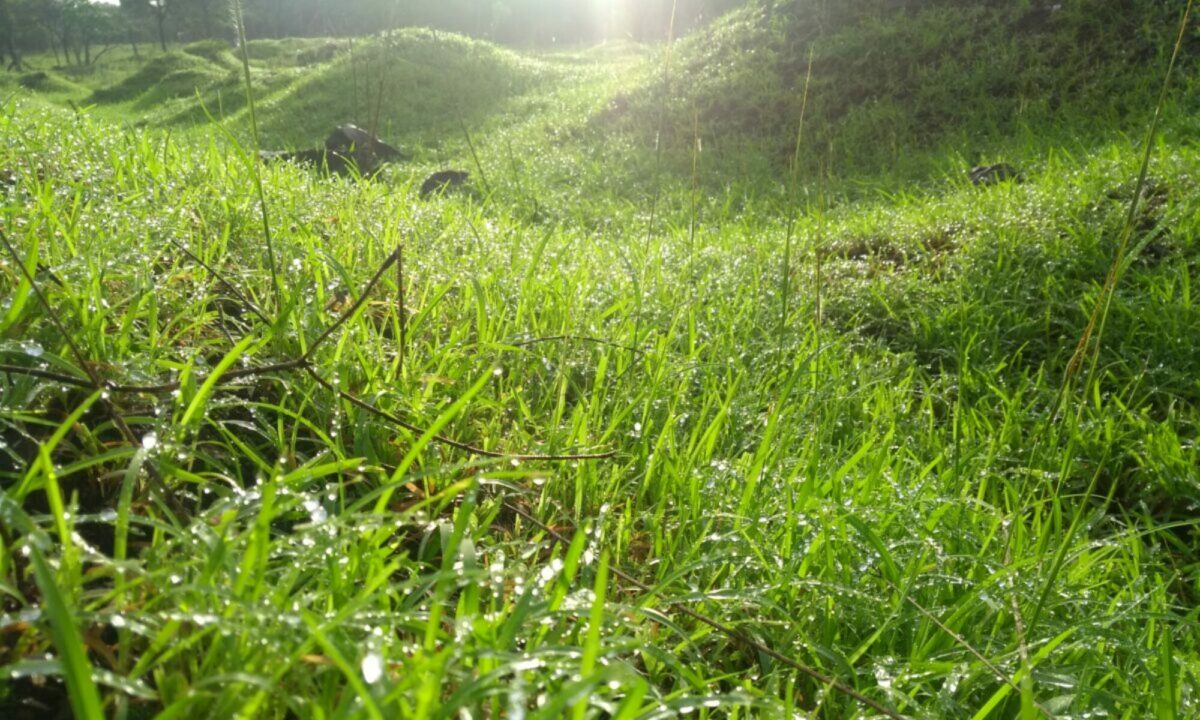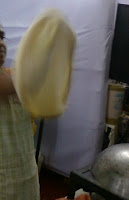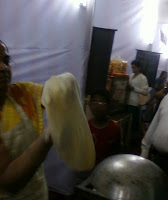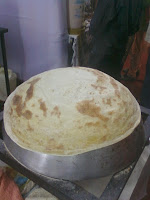T33/4 was situated at the end of the lane and stood amidst an overgrown bamboo jungle, dwarfed by a huge Seemal and surrounded by bleeding hearts. The two-roomed barrack styled cottage looked romantic bathed in sunlight that streaked through the branches. Come nightfall, it was something straight out of Jurassic Park.
It was past ten and the night was punctuated by the frequent roar of laughter from the Ramsies’ in T33/3. She had excused herself early wanting to tie up loose ends. As usual there was no electricity and Pramila pushed aside the old Feminas and newspapers lying on an old crate that served as a table and lit a candle. She had been working all day and was exhausted. This was the last night she thought with a smile, tomorrow she would finally move into her their ‘permanent’ accommodation. It was the thought of this move that kept her company in their lonely ‘temporary’ home while her husband was away on official business. She removed curtains from the window, dumped their clothes into a suitcase and sat on it hoping her would her weight would bring the edges together. Their belongings and she were ready to move.
The bonfire next door choreographed eerie orange and black figures on her windows Pramila heard some scrabbling and panicked. Where was the torch? She blindly groped in her handbag and her fingers closed around the steel cylinder. In her hurry to switch it on it fell to the ground, and she was on her knees groping to find it. She gingerly moved her hands around the rough cemented floor fearing touching the giant cockroaches that always ran around the moment there was no light. Aaah, there it was… The yellow beam pierced every dark corner as she looked for… she knew not what… Was that an old floor stain or did it wriggle? She had left open a window at the back for some air so could that be a snake? Though the memory was two weeks old, Pramila could still feel the smooth cold skin against her feet as the Machoa gom had slid past her to escape its hiding place behind the bucket in the bathroom. The torchlight outlined a huge rat as it headed for the false ceiling. Relieved, she decided she had done enough for the day.
The transition to this remote location had been difficult. Being a city girl, she couldn’t accept living in this shack that served as their temporary home. ‘Cottage’ meant glorifying this bamboo thatched structure standing amidst grass that grew at least an inch a day. Hence her daily cribs and their daily arguments. He tried to reason with her, “All personnel live here at some point and it is only temporary.” Yet Pramila continued her rantings. Her husband left for his present assignment after one such major fight.
But things seemed to be looking up now. The job at the school was an unexpected opening and they were allotted their brick and mortar home out of turn. Teaching chemistry to 14-year olds was a far cry from her research assistantship at the Institute in Pune but she was willing to compromise. God did listen and she promised herself to turn over a new leaf. Pramila couldn’t wait for him to come home.
She gulped her Calmpose and got into bed. Much as she didn’t want to, she had got into a habit of popping a sedative when alone. A blissful dreamless state kept unwarranted cribs and worries at bay. The night covered her in a thick blanket and the fauna sang for her. The crickets’ set up a crescendo and each movement ended in a refrain by hundreds of frogs. Lizards clicked and chuckled as they raced each other across the walls and she was thankful to the darkness as their sight filled her with revulsion. Tens of mosquitoes buzzed tirelessly around her some making bold dives towards her.
She did not, could not shake away her attackers. Sleep’s velvety claws engulfed her and took control of her mind. Pramila’s limbs seemed to become heavier and heavier as she happily floated between T33/4 and a dark warm world. The candle flame flickered brighter as it ate up the last of wax and the newspapers and magazines below it. She vaguely heard the Ramsies driving off with their guests. A faint pervading acrid smell seemed to be increasing. Her brain flashed cautionary signals but she was in a world apart. Her eyelids and limbs would not respond to urgent commands they received. It was her last night in this dump. Tomorrow, tomorrow she would sleep in proper home…
As the Ramsies drove back, they saw flames leaping out of the cottage at the end of the lane.



